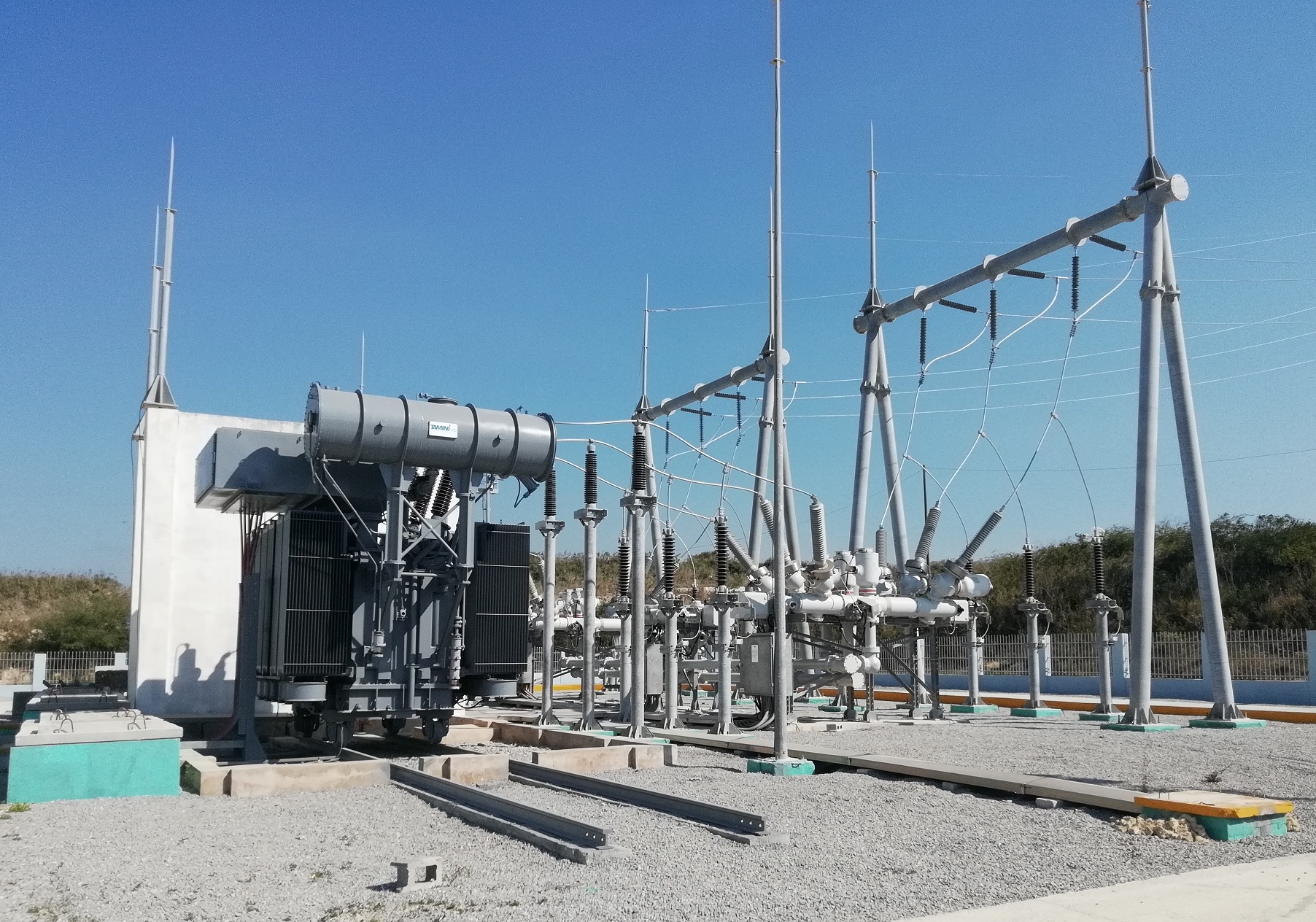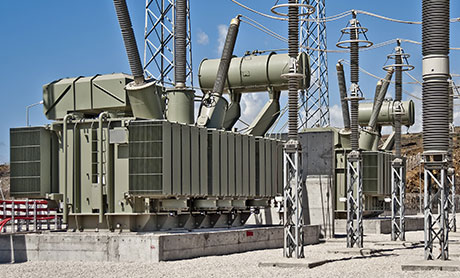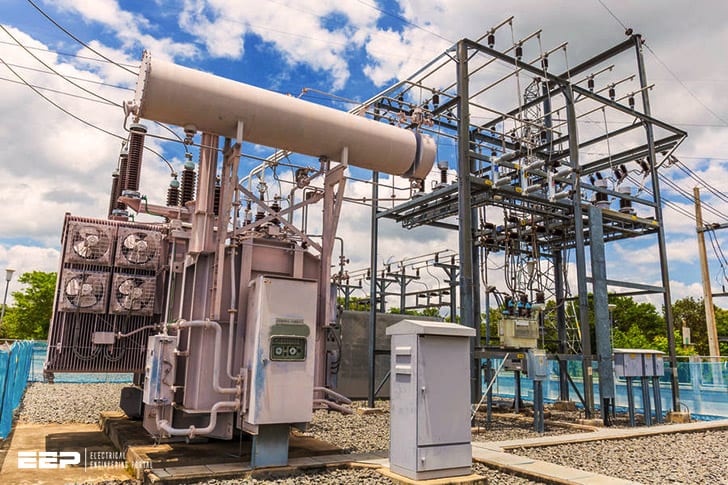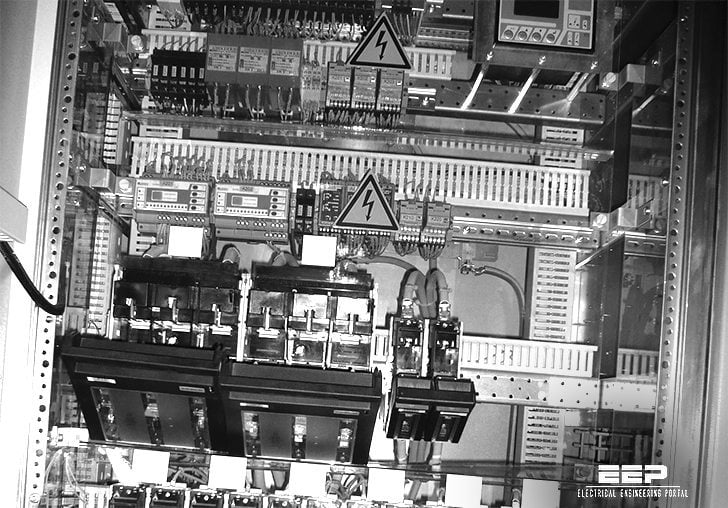A high-voltage, medium-voltage (HV/MV) substation is a type of electrical substation that transforms high-voltage, medium-voltage or both high-voltage and medium-voltage electricity from the transmission network to the lower voltage distribution network. The HV/MV substation is typically used in urban areas where there is a large demand for electricity. The HV/MV substation includes a variety of components, including transformers, circuit breakers, switchgear, and protection devices.
An HV/MV substation is a type of electrical substation that converts high voltage (HV) electricity to medium voltage (MV) electricity. The HV/MV substation is used in many different applications, including power generation, transmission, and distribution.
Hv Mv/Lv Switchgear
Switchgear is a device which is used for controlling, protecting and isolating electrical equipment. It is an assembly of one or more enclosed sections consisting of switches, fuses, relays and/or circuit breakers used to control, route or isolate electrical circuits.
There are two main types of switchgear: high voltage (HV) and low voltage (LV).
High voltage switchgear is used in power plants and substations to control the flow of electricity. Low voltage switchgear is used in commercial and industrial buildings to distribute power throughout the premises.
Switchgear must be able to withstand the highest short-circuit currents that may occur within its network.
It must also be able to operate safely under normal conditions and be easy to maintain.
The most common type of HV switchgear is air-insulated (AIS), while gas-insulated (GIS) switchgear is typically used for voltages above 72 kV. AIS switchgear uses air as an insulating medium, while GIS uses SF6 gas.
LV switchgear can be either metal-enclosed (MCC) or non-metallic enclosed (NEMA). MCCs are often used in industrial applications where space is limited, while NEMAs are typically used in commercial applications such as office buildings.
High Voltage Equipment List
When it comes to working with high voltage equipment, it is important to have a comprehensive list of the items that you will need. This way, you can be sure that you have everything that you need on hand, and that you are prepared for any potential hazards. Here is a detailed list of high voltage equipment:
-Safety glasses: These are a must when working with high voltage equipment. They will protect your eyes from sparks and other flying debris.
-Rubber gloves: Rubber gloves insulate your hands from electricity.
They should be worn whenever you are working with high voltage equipment.
-Fire extinguisher: A fire extinguisher should be nearby whenever you are working with high voltage equipment. This way, if a fire does start, you can quickly put it out.
-First aid kit: A first aid kit is always important to have on hand, in case of an accident. Be sure to include items such as bandages, gauze, and antiseptic wipes.
Mv/Lv Electrical
Mv/Lv Electrical is a company that specializes in electrical services. They offer a wide range of services, including electrical repairs, installations, and maintenance. They are based in the United Kingdom and have been in business for over 10 years.
Their team of qualified electricians are experienced in all aspects of electrical work, so you can be sure that your home or office is in safe hands.
Lv, Mv Hv Voltage Ranges
There are three voltage ranges in the UK electricity grid: low voltage (LV), medium voltage (MV) and high voltage (HV). The LV range is up to 1,000 volts, the MV range is 10,001-33,000 volts and the HV range is 33,001-275,000 volts. The different voltages are used for different purposes in the electricity grid.
For example, HV is used for long distance transmission of electricity because it reduces energy losses.
Mv Electrical Line
An Mv Electrical Line is a high voltage power line used to transmit electricity over long distances. These lines are typically made of metal, and they can be either underground or overhead. Mv Electrical Lines are an essential part of the electrical grid, and they play a vital role in the transmission of electricity.
Mv Electrical Meaning
Mv electrical meaning is the potential difference in volts between two conductors. The term can also be used to refer to the potential drop across a resistor or capacitor.
Difference between Lv And Mv Switchgear
There are many types of switchgear available on the market today. Two of the most common types are low voltage (LV) and medium voltage (MV) switchgear. So, what is the difference between these two types of switchgear?
LV switchgear is typically used for voltages up to 1,000 volts. MV switchgear is typically used for voltages from 1,000 to 36,000 volts. The main difference between these two types of switchgear is the voltage that they can safely handle.
Another difference between LV and MV switchgear is the size and weight of the equipment. MVswitchgear is much larger and heavier than LVswitchgear due to the higher voltages it must be able to handle. This also means that MVswitchgear requires more space to install than LVswitchgear.
Finally, there are differences in how LV and MV switchgear are operated. Most LVswitchgear can be operated manually, while MVswitch gear is usually operated remotely or automatically due to the high voltages involved.
Hv Switchgear Components
If you work in or around electrical power, it’s important to know your way around hv switchgear components. This type of equipment is used to help control, protect and distribute high-voltage electricity. Let’s take a closer look at some of the most common hv switchgear components and how they work.
One of the most important hv switchgear components is the circuit breaker. Circuit breakers are designed to automatically interrupt the flow of electricity in the event of an overload or short circuit. This helps prevent damage to electrical equipment and keeps people safe.
Another key component is the disconnect switch. Disconnect switches are used to manually open or close an electric circuit. They’re often used as a safety measure, for example when maintenance needs to be carried out on electrical equipment.
The busbar is another essential hv switchgear component. Busbars are made from copper or aluminum and carry large amounts of current between different parts of the switchgear assembly. They need to be able to withstand high temperatures and loads, so they’re usually made from thick, heavy-duty materials.
Finally, we have fuses. Fuses are devices that contain a thin wire that melts when too much current flows through it. This interrupts the flow of electricity and prevents damage to electrical equipment .
Fuses need to be carefully selected according to the amount of current they’ll be carrying, as using one that’s too small can cause problems while using one that’s too big can waste energy .

Credit: www.crtsgroup.com
What is Hv Mv Substation?
An HV MV substation is a high voltage, medium voltage substation. These are typically used in electrical power systems to step down the high voltage from the transmission system to the lower voltage that is used by the distribution system. The HV MV substation will usually have a transformer that steps down the voltage and then switchgear that further reduces the voltage for use by the distribution system.
What is Mv And Hv?
MV and HV are two types of electrical power systems. MV is medium voltage and is used for distribution, while HV is high voltage and used for transmission. Both have their own advantages and disadvantages, but MV is generally more economical and easier to maintain than HV.
What is the Difference between Hv And Lv Substation?
An HV substation steps down the high voltage from the transmission line to a lower voltage that can be used by consumers. An LV substation steps down the voltage from the HV substation to an even lower voltage that is safe for household use.
What is Lv Mv Hv Voltage Ranges?
In electrical engineering, the voltage ranges between which various equipment can safely operate are defined by standards organizations such as the Institute of Electrical and Electronics Engineers (IEEE). The most common voltage ranges are:
Low Voltage (LV): 0-1000 volts
Medium Voltage (MV): 1000-35000 volts
How to apply the earthing device in HV/MV substations with guidance device for insulating sticks
Conclusion
A high voltage, medium voltage (HV/MV) substation is an electrical substation that converts high voltage electricity from the transmission system to a lower voltage for distribution to consumers. The HV/MV substation is a key component in the electric power grid.
The HV/MV substation may also include devices to protect the equipment from faults on the high voltage side, such as circuit breakers and transformers.
The layout of an HV/MV substation can vary depending on the voltages involved and the type of equipment used.



